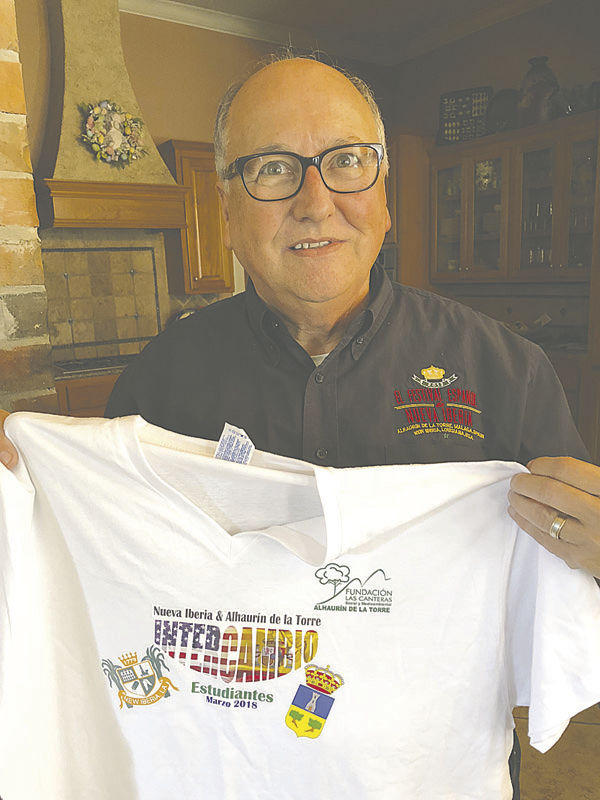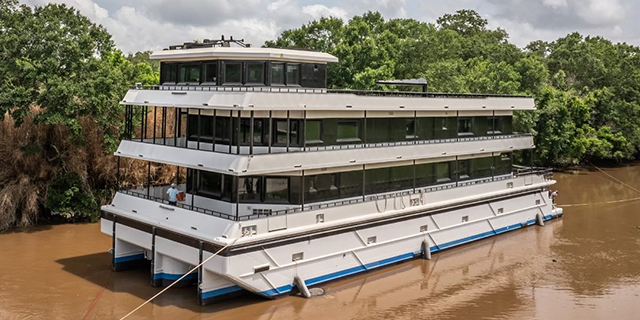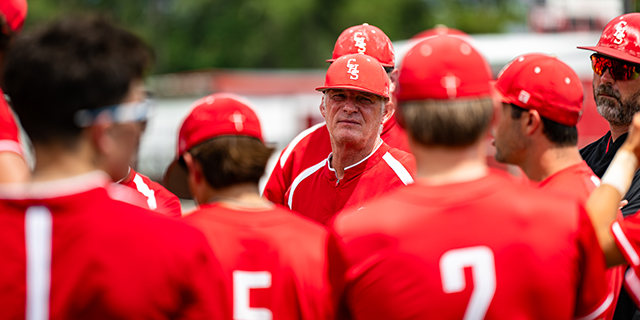Spanish legacy continues
Published 5:00 am Sunday, April 22, 2018

- Ebrar J. Reaux, former teacher and school administrator, recently returned from New Iberia’s Sister City, Malaga, Spain. The government presented the students with T-shirts and mugs depicting a new logo that blends the two nations together. Reaux is also president of the El Festival Español de Nueva Iberia
Ancestors saluted as descendants celebrate the Teche
Yet another festival coming to New Iberia, but before dismissing the idea of attending, consider the legacy that is celebrated for only six years. The 2018 event marks the first year the Spanish heritage of New Iberia will be recognized during the spring. The names of the ancestors who not only settled in the land but were part of the naming of the community, are also the ones that in many instances remained and persevered to keep the colony alive during hard times. The promise, as they left Spain and other Spanish speaking areas, of a bright future in a new country gave way to sickness, death and disappointment. A new frontier was about to become a Cajun gumbo.
Historian Recalls the Early Days
The late Glenn R. Conrad in his book, “Iberia — Essays on the town and its people,” tells a story that plays into the May festival in Chapter 1: The Spanish Years.
“The Teche country was largely unknown to the French during their years in the Mississippi Valley,” said Conrad in his book. “We know that shortly after the Spanish acquisition of Louisiana official action was taken to plant Spanish settlers among the predominantly French population of the colony.”
Governors Luis de Unzaga and then his successor Bernardo de Galvez strategized about the best way to maintain order in the region and grow it for Spain was to import Spanish families. The costly program did not turn out as they anticipated.
“The rapid rise and fall of the several Spanish communities planted in Louisiana prior to 1780 … was apparently abandoned after the events of August 1779 led to Spain’s involvement in the American War for Independence. They learned the loyalty of Louisianians was no longer toward Spain and the program was brought to an abrupt end,” Conrad’s book said.
“Nevertheless, it was this program which gave birth to New Iberia, and the midwife of that event was Don Francisco Bouligny,” Conrad said.
Bouligny believed an increased population would mean a more productive Louisiana, though he did not mention the Spanish Crown’s strategy in particular. Governor Galvez convinced a group of Canary Islanders to emigrate and another group of Spanish refugees from British occupied Florida crossed into Louisiana.
Meanwhile, Bouligny was “recruiting emigrants in southern Spain, particular in the port town and province of Malaga. Thus, between July 1777 and June 1778, he succeeded in convincing 16 families, constituting 82 people, to emigrate to Louisiana. To encourage this emigration, the crown agreed to subsidize the settlers until their first crop was harvested.”
Before arriving in Louisiana, after crossing the Atlantic, some of the 16 families disembarked at Cadiz or Puerto Rico because of illness leaving only 40 members of the original party, about 60 people, to arrive in New Orleans.
Galvez and Bouligny disagreed on where to settle the Malagueños because of the crops they were planning to cultivate. Bouligny favored a more northern region near the Ouachita River where wheat, barley, flax and hemp crops would fair more easily. But it was too far for Galvez to feel secure in protecting and possibility controlling.
“After extensive preparations, Bouligny and the Malagueños, accompanied by a group of leased slaves and a handful of soldiers, left New Orleans in mid-January 1779. Four days later the group entered the Teche. Ascending the bayou, Bouligny scrutinized potential sites and finally selected what to him was the most strategic spot where a large bend in the bayou brought the stream to within a mile of the Atchafalaya lake system. We call the spot Charenton — he called it Nueva Iberia,” Conrad’s book said.
However, they did not anticipate the bayou rising rapidly due to incessant rain. The tiny settlement was inundated by six-feet of water.
“Discouraged, but not despairing, Bouligny and his little group gathered up what was left and started up the Teche in search of higher ground. Just before reaching the next bend of the bayou, about twenty miles above the abandoned site, the group came upon a slight bluff and decided that there they would settle,” Conrad said.
Already claimed by Francois “Colet” Prevost, a deal was made and New Iberia was established. Although Bouligny Plaza is located on Main Street today, the actual landing is believed to have been near Jane and Camelia Streets. Ebrar J. Reaux, president of the El Festival Español de Nueva Iberia said the bluff where they landed was the high point along the Bayou Teche. A scout limbed a tree to survey the dry ground.
Above the original painting by New Iberia artist Chestee Harrington is this statement by Lieutenant Governor Don Francisco Bouligny, 1779, “ … next to a small site of the Chitimacas whose beautiful location and excellent soil seems to me very favorable to the settlement of this population, for the cultivation and for raising all sorts of animals. In my judgment it would be difficult to find a site that has as many advantages.
Celebrating New Iberia
New Iberia is the only colony settled in Louisiana by the Spanish governors to remain and prosper since the colonists arrived in Louisiana. Learning more about the cultural heritage of the Spanish ancestors and exchanging lifestyles with them has become an ongoing passion for Reaux. After returning from Spain for what he considers the best exchange trip to date, the Spanish Festival organizer and president has turned his focus for the remaining weeks to creating the festival theme — “Spain Alive.”
During the opening ceremonies Friday night, May 11, flags will lead the procession representing the seven families that remained and built New Iberia. Also on Friday night is The Spanish Gala, the festival fundraising event which follows a lecture by Wade Falcon. Falcon descended from Canary Islanders and his wife, Lacy Romero Falcon, from Malaga, Spain. Tickets to the event are $75 and include an annual membership in La Asociación Española de Nueva Iberia.
For the first time this year, the Canary Islanders Heritage Society will be participating in the Fiesta Español. On display will be the genealogy of the Isleños of Southwest Louisiana and a Sons of the American Revolution and Daughters of the American Revolution display. Descendants will be able to research their family lines to discover if they are eligible to be named “Patriots of the American Revolution.” The group also will share a general story of the Canary Islanders of Louisiana.
Because of the city twining, Brenda Lowry, DAR Iberia Chapter Regent has become an associate member of the Espana Chapter of DAR. Although in Madrid, Spain, Lowry is encouraging fellow members to join her efforts in support of the link between the two nations.
Another ongoing support for the Spanish culture in the Teche Area is the festival’s Spanish Language Lessons. Held the last Monday night of each month at the Main Street Library, anyone interested in learning the language or taking a refresher can do so for free. Jim Viator is the instructor and the class starts at 6 p.m. Troy Leleux has created the 2018 festival poster bringing a new vibrance to his symbolic artistry. The unveiling of the poster will be at 6:30 p.m. April 26 at Clementine On Main followed by a reception.
Plan now to attend the 6th annual El Festival Español de Nueva Iberia, join the Running of the Bulls 5K/1 mile Fun Run, experience a re-enactment of the arrival on Bayou Teche, eat, fais-do-do and attend the Mass of Thanksgiving on Sunday in honor of all mothers and founding families.
To check the schedule, visit the festival website, NewIberiaSpanishFestival.com.





